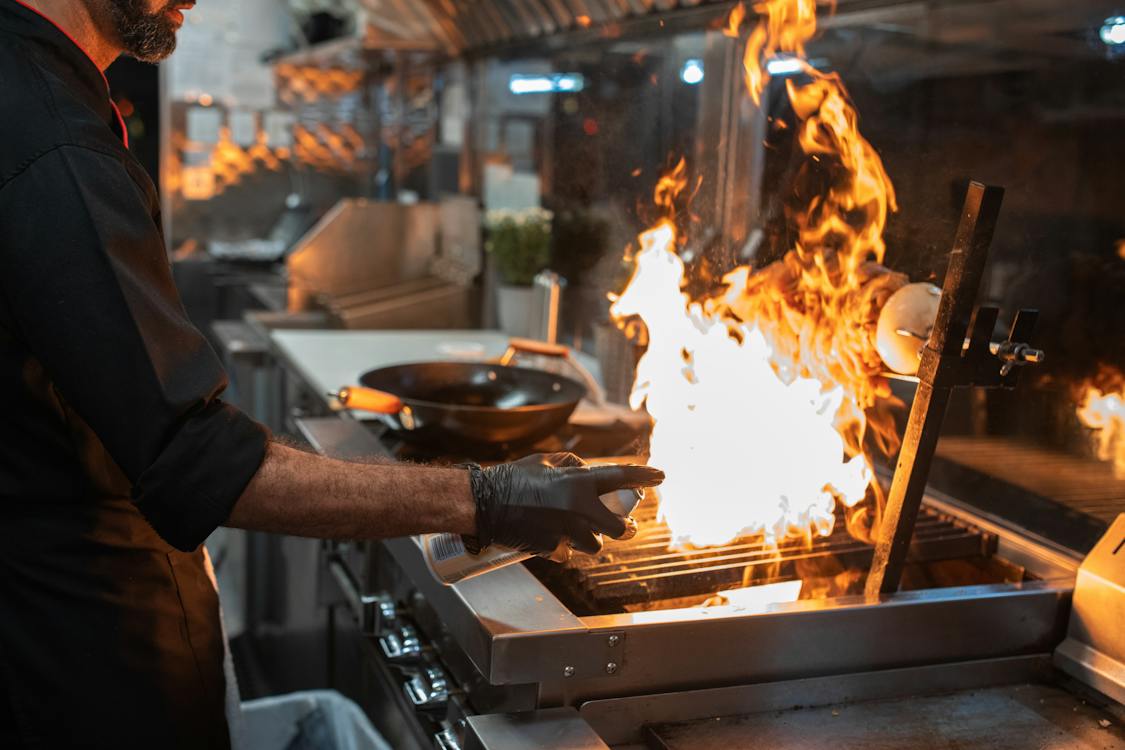The kitchen is the heart of the home. After all, it’s where all the delicious food gets cooked. However, it can also be a potential source of danger, especially when it comes to fires.
According to the US Fire Administration, in 2021, US fire departments responded to around 170,000 home kitchen fires. It’s also been observed that most home fires originate from the kitchen.
For parents, the thought of a kitchen fire occurring while their children are at home is a terrifying one. However, with the right knowledge and preparation, you can reduce the risk and know how to respond in case of an emergency.
In this article, we’ll discuss a few crucial things to remember when dealing with a kitchen fire, especially when children are in the house.
#1 Stay Calm and Act Quickly
In the event of a kitchen fire, it’s vital to stay calm and act swiftly. Panicking can lead to poor decision-making, potentially making the situation worse.
Your children will look to you for guidance, so your composed demeanor is crucial in keeping them safe. The moment you notice a fire, your first action should be to turn off the source of the flames.
If it’s a stovetop fire, Verywell Health advises that you immediately turn off the burner or oven. Similarly, if it’s a grease fire, do not attempt to put it out with water. Instead, use a fire extinguisher.
If the fire is small and contained, you can try to extinguish it with a fire extinguisher, but always remember the acronym “PASS”: Pull the pin, Aim the nozzle, Squeeze the handle, and Sweep from side to side. However, if the fire is spreading rapidly or you’re unable to contain it, evacuate the kitchen and house, ensuring the safety of your children.
#2 Evacuate Safely
If the fire becomes unmanageable or if there’s any doubt about your ability to control it, evacuate the kitchen immediately. Ensure that your children know the predetermined escape routes in your home. Designate a meeting place outside the house where you can account for all family members. It’s crucial to have a well-practiced fire escape plan in place to ensure everyone’s safety.
When evacuating, prioritize the safety of your children by ensuring they are with you or another responsible adult. Teach them to crawl low beneath the smoke to avoid inhaling harmful fumes. Remind them never to re-enter the house until it’s declared safe to do so by the fire department.
#3 Fire Safety Equipment and Tools
Your kitchen should be equipped with the necessary fire safety tools. In addition to smoke detectors and fire extinguishers, a fire blanket can also be a valuable addition. Fire blankets are designed to smother small fires, particularly those that occur in cooking areas. You can quickly place a fire blanket over a small stovetop or grease fire to suppress it. Make sure your children are aware of these tools and how to use them safely.
Moreover, keeping a well-maintained kitchen can prevent potential fire hazards. Regularly clean your stove and oven, removing built-up grease and food debris, as these can ignite and cause a fire. Store flammable materials like dish towels and oven mitts away from the stove, and ensure electrical outlets and appliances are in good working order.
If you have extinguishers at home, make sure they don’t contain any toxic chemicals. As seen in the AFFF firefighter foam lawsuit, such fire extinguishers can cause various types of cancer including breast and prostate cancer. Therefore, if you plan on keeping extinguishers at home, always check the manufacturing details to ensure that they’re free from such chemicals.
TorHoerman Law reports that several studies have found PFAS chemicals in AFFF firefighting foams. These chemicals are responsible for causing cancer in humans. Hence, you should be on the lookout for this particular group of chemicals in your extinguishers.
#4 Keep a Lid on It
One of the most common kitchen fire scenarios is a grease fire. Grease fires can quickly escalate, creating a dangerous situation. In such instances, your instinct may be to pour water on the fire. However, this can make matters worse, causing the flames to flare up and spread. Instead, remember this essential kitchen fire-fighting tip: keep a lid on it.
Green Valley Fire District suggests that if you notice a small grease fire in a pan, immediately cover it with a tight-fitting lid. This will smother the fire by cutting off its oxygen supply, effectively putting it out. Make sure your children understand this technique as well; it’s a simple yet highly effective way to deal with a common kitchen fire.
#5 Emergency Services and Contact Information
Teaching your children how to contact emergency services is crucial for their safety. Ensure that they know how to dial 911 and communicate the address accurately to the dispatcher. Instruct them to stay on the line with the operator until help arrives and to provide any essential information about the situation.
Additionally, it’s a good practice to have a list of emergency contact numbers posted near the phone. Include not only 911 but also the contact information for friends or family members who can be reached in case of an emergency.
Conclusion
Kitchen fires are very risky, especially when kids are around. Thus, keep yourself and your kids safe by ensuring the details discussed above. As you do so, you’ll reduce the risk of sustaining injuries or major losses due to such incidents.

Blogger, traveler, Tech Enthusiastic and content writer.







